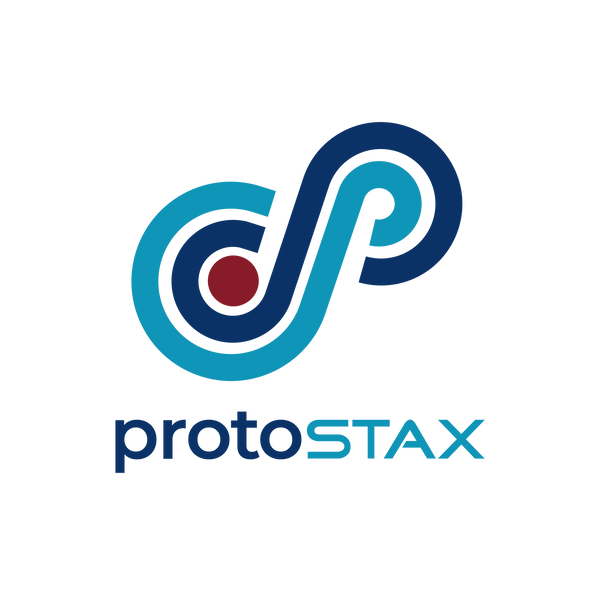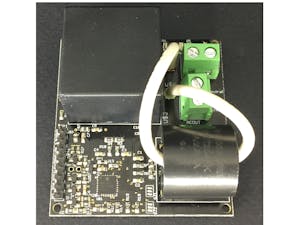What is Dr. Wattson?
Dr. Wattson is an Energy Monitoring Module from Upbeat Labs that allows you to easily incorporate high quality AC energy monitoring & measurements in your next project! It is coupled with easy to use Arduino & Python libraries that make getting quality AC energy data – like RMS Current, RMS Voltage, Power Factor, Line Frequency, Active/Reactive/Apparent Power – a breeze, with just a couple of lines of code.
The unit comes pre-calibrated, enabling you to start taking quality measurements from 90-240v, at either 50 or 60 Hz, and for currents up to 15A. You don't need any additional CT/VT or other components.
Dr. Wattson is based on the MCP39F521, a single-phase power monitoring chip from Microchip.
If you're familiar with the MCP39F521 you can also use Dr. Wattson as a breakout board for the MCP39F521
Measure Big. Or Small
With a 4000:1 Dynamic Range and capable of 0.1% accuracy, the MCP39F521 is a versatile chip that allows great flexibility with measurements. Dr. Wattson takes that flexibility and makes it easy to use - it comes calibrated to measure currents from 5mA all the way up to 15A.
[If you want to measure lower currents like standby current usage, Dr. Wattson can be recalibrated to work with a lower range by changing the burden resistors and recalibrating the board to that range (for e.g. 1mA to 4A). Periodically, we will release burden resistor settings & calibration constants to support such ranges, with instructions being provided!]
Arduino & Python Libraries
Comprehensive, yet easy-to-use Arduino & Python libraries allow you to easily integrate Dr. Wattson into your application of choice – your favorite flavor of Arduino (Uno, Mega, Nano, etc!), or single-board computer like Raspberry Pi or BeagleBone Black.
Dr. Wattson caters to both the novice and advanced user! The libraries are intuitive and easy to use for the common use-case and yet are very comprehensive and allow for advanced usage.
Ample code examples
There are quite a few code samples to get you started or serve as inspiration, such as:
-
Getting energy data (VRMS, IRMS, Line Frequency, Power Factor, Active Power, Reactive Power, Apparent Power)
-
Energy Accumulation (turn on energy accumulation to track energy consumption (and generation) in the background without intervention, allowing your microcontroller/single-board-computer to go to sleep or do other stuff!)
-
Events (get notified when Voltage Sag/Surge happens, or Over-Power/Over-Current conditions happen using external interrupts and using the library to easily read which triggering event condition happened)
-
Write to/Read from EEPROM (The MCP39F521 has 256 16-bit words of EEPROM that is organized in 32 pages for a total of 512 bytes. Convenience methods in the library let you write to and read from this memory easily!)
-
ZCD (Get Zero Cross Detection notifications via external interrupts. This is useful, for example, for controlling a dimmer switch (and reporting the energy saved by dimming!))
and more advanced examples such as
-
Integration with AWS IOT - build your own internet-connected energy monitor!
-
Energy data logger - log data to an SD card with log rotation
-
Energy monitor with OLED screen - monitor energy and display information on an OLED screen
Quality Construction
Dr. Wattson comes with an environmentally friendly and high-quality ENIG finish (lead-free) with lead-free solder, and quality components! The isolated sensor design using current and voltage sensing transformers ensures that the board itself is not in the path of the high current load, for safer usage and development.
It includes 4 mounting holes (M2.5) to enable you to put it into a safe enclosure. We also offer an optional enclosure - ProtoStax Enclosure for Dr. Wattson Energy Monitor).
Configurable I2C addressing
Solder jumpers on the board enable you to pick from 4 possible I2C addressing schemes to help avoid conflicts with other devices. It also allows you to control 4 of these boards from a single MCU using the same I2C bus - monitor energy consumption & usage from 4 different loads for example.
ZCD & Event pins
Use the Zero Cross Detector (ZCD) output to orchestrate any synchronization like firing a Triac for dimming.
The Event pin gives you output indication on the presence of configured events of interest, like voltage surge/sag, over-current, over-power.
Configure the events of interest via the Arduino/Python library, and get notifications by connecting these pins to any externally interruptible pin in your MCU. Using the library, you can then query the board to find out which event occurred.
Use with 5v & 3.3v systems
While the board is powered by 3.3v, it uses bi-directional level shifting on all IO pins, so you can use both 3.3v and 5v systems without any modifications or need for level shifting. Just set the Vin pin on the Dr. Wattson board to your MCU/SBC logic level voltage and Dr. Wattson will take care of everything else.
Dimensions
2.38 in x 2.25 in x 0.93 in












